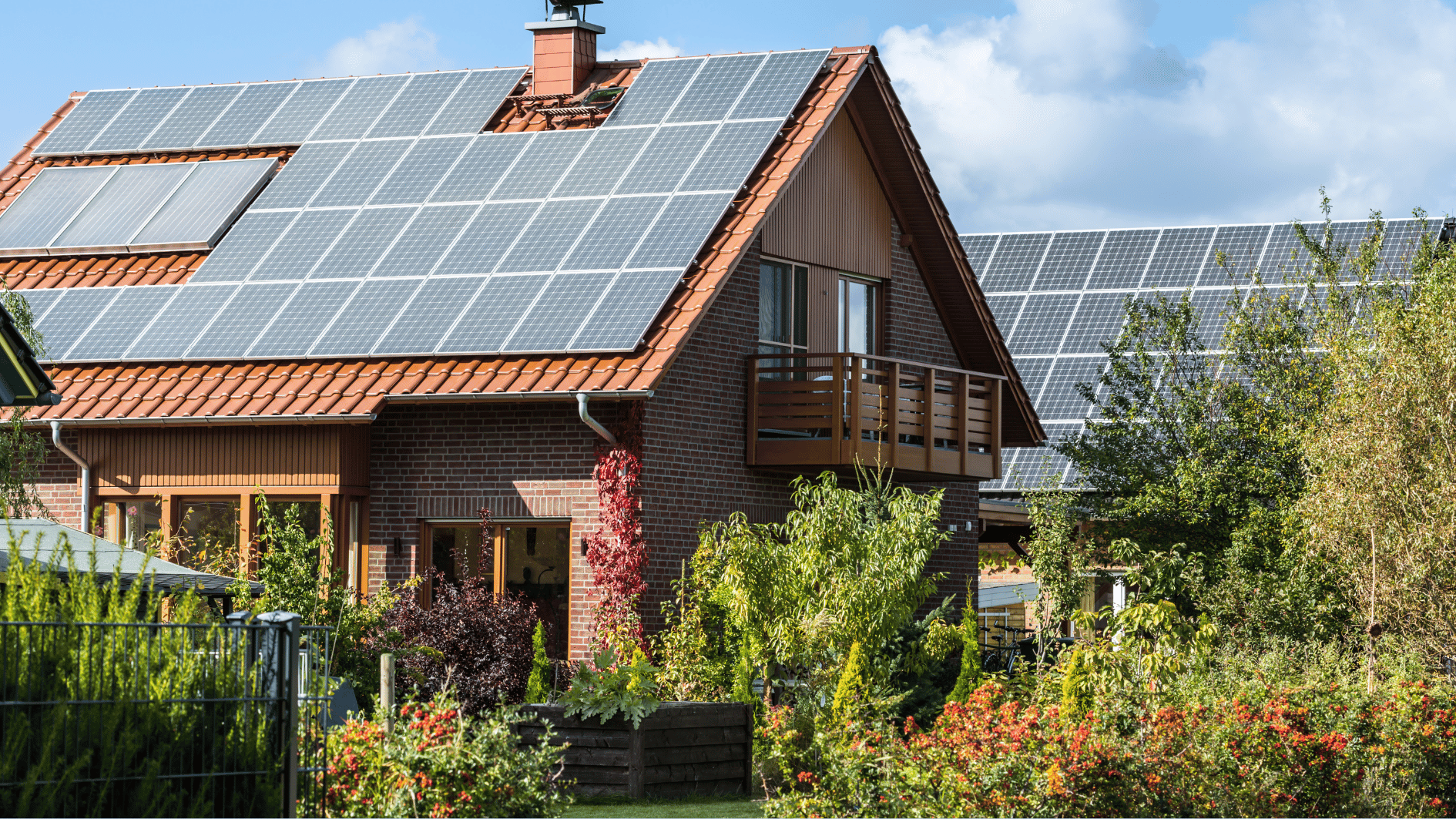Image source: Canva.com
Choosing the right solar panel is key to ensuring your system is efficient and cost-effective. With options like monocrystalline, polycrystalline, and thin-film panels, each offering unique features and benefits, it’s important to pick one that fits your energy needs, budget, and installation conditions. This guide breaks down the main types of solar panels and factors to consider, helping you make the best choice for your home or business.
Types of Solar Panels
There are three main types of solar panels: monocrystalline, polycrystalline, and thin-film. Each type has distinct advantages and disadvantages, making them suitable for different applications based on your preferences and the specifics of your property.
Monocrystalline panels
Monocrystalline panels are known for their high efficiency and performance. They are made from single-crystal silicon, which allows them to convert a higher percentage of sunlight into electricity. However, they tend to be more expensive compared to other types.
Polycrystalline panels
Polycrystalline panels offer a more cost-effective option. They are made from multiple silicon crystals, which lowers their manufacturing costs. While they are generally less efficient and perform slightly worse than monocrystalline panels, their affordability makes them an attractive choice for many.
Thin-film panels
Thin-film panels are noted for their portability and flexibility. They can be a good option for installations where space is limited or where a more adaptable panel is required. However, they typically have lower efficiency and performance compared to monocrystalline and polycrystalline panels.
Choosing the right solar panel type involves balancing these factors to best meet your energy needs and budget.

What Are the Costs of Different Types of Solar Panels?
The cost of solar panels varies based on their manufacturing processes.
Monocrystalline Solar Panels
These panels are generally the most expensive due to the costly manufacturing process, which involves creating solar cells from a single crystal. This method, known as the Czochralski process, is energy-intensive and results in some silicon waste. However, this waste can be used to produce polycrystalline panels.
Polycrystalline Solar Panels
Polycrystalline panels are usually more affordable because their cells are made from silicon fragments rather than a single crystal. This results in a simpler and less costly manufacturing process.
Thin-Film Solar Panels
The cost of thin-film panels varies depending on the type. CdTe panels are typically the least expensive to produce, while CIGS panels are more costly. Although the overall cost of thin-film panel installations is usually lower than that of monocrystalline or polycrystalline systems, this is due to the panels being lighter and easier to handle, which reduces labor costs.
How Does Efficiency Vary Among Different Types of Solar Panels?
The efficiency of solar panels varies based on their type. If you have limited roof space, choosing a high-efficiency panel will help you maximize your system’s performance.
Crystalline Solar Panels
Monocrystalline panels generally offer the highest efficiency and power capacity, with efficiencies exceeding 22% and power outputs of over 300 watts (W), often surpassing 400 W. Polycrystalline panels, however, rarely exceed 17% efficiency and tend to have lower wattages. Monocrystalline panels also perform better in higher temperatures due to their lower temperature coefficients, maintaining higher efficiencies in hot weather. Both types are available in similar sizes, usually 60, 72, or 96 silicon cells.
Thin-film panels typically have lower efficiencies, around 11%, compared to monocrystalline and polycrystalline panels. Their power capacity varies based on physical size, but generally, they offer less power per square foot. Thin-film technology does not come in uniform sizes, which affects the power output from one panel to another.
Thin-Film Solar Panels
What Materials Are Used in Solar Panels?
Solar panels convert sunlight into electricity using semiconducting materials. Silicon is the most common semiconductor used in solar cells.
Crystalline Solar Panels
Monocrystalline and polycrystalline panels are both made from silicon wafer cells. Monocrystalline panels use silicon from a single crystal, while polycrystalline panels use melted silicon fragments. Both types are assembled into rows and columns, covered with a glass sheet, and framed.
Thin-Film Solar Panels
Thin-film panels can be made from various materials. Cadmium telluride (CdTe) panels are common, featuring a layer of CdTe between transparent conducting layers and a protective glass layer on top. Other thin-film panels use amorphous silicon (a-Si) or Copper Indium Gallium Selenide (CIGS), each with unique properties and construction methods.
Visual Differences Between Solar Panel Type
Monocrystalline Solar Panels
These panels are often black due to the pure silicon crystal used. They typically have black, silver, or white back sheets and black or silver frames. Black-framed monocrystalline panels blend well with most roofs.
Polycrystalline Solar Panels
Polycrystalline panels have a bluish hue from the silicon fragments reflecting light differently. They usually have silver frames and back sheets in silver or white.
Thin-Film Solar Panels
Thin-film panels are slimmer and have a low profile. They can be blue or black and are often less visible from the ground. Thin-film panels are much thinner but may have similar overall thickness depending on their framing.
Choosing the Best Solar Panel Type for Your Needs
The choice between monocrystalline, polycrystalline, and thin-film panels depends on your space and savings goals.
- Monocrystalline panels are ideal for limited space due to their high efficiency, maximizing savings on your electric bill.
- Polycrystalline panels are a good option if you have ample space and want to reduce initial costs.
- Thin-film panels are best suited for portable or DIY solar systems, like those on RVs or boats, or for large commercial roofs that can accommodate their lower efficiency and weight.
Consider your specific needs and goals to determine which solar panel type is right for you.
Discover your potential savings with solar panels!





